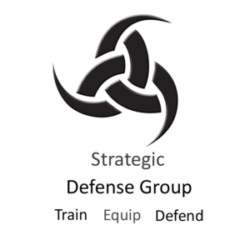Is there any way to predict the imminent danger of an attack? Absolutely! Can this be done with 100% accuracy? Nope. However, we can gather data, add it together, and compute a likelihood and probability. We do this by looking at past events, their outcome, and comparing that with our current circumstances.
Each and every incident is unique, but more than that, they are ever evolving and changing as they unfold. We are going to look at some “pre-attack indicators”. So called for their purpose and function. We look at pre-attack indicators prior to an attack to help us calculate its outcome.
Here is an incomplete, but sizable list of pre-attack indicators:
- Darting glances (looking escape or friends)
- Target Glance (looking at weapons, or targets)
- Face wipe
- Grooming (adjusting hair, picking at nose ears, etc)
- Removing clothes (seriously, taking off the shirt is common)
- Cracking Knuckles (preparing the fists)
- Pacing back and forth (unsettled and nervous)
- Pointing fingers (admitting target)
- Shouting and screaming
- Threats (obvious)
The above list is not exhaustive, but it is a good start. When you find yourself in a sketchy situation, look for some or all of the above cues. They may or may not be present in any and all combinations. A calm, cool, and experienced head, is not likely to show signs of a fight, so this is not a guarantee, just a likelihood.
Once we have looked for pre-attack indicators we need to make an assessment. This is where we move from information to intelligence. Let us do a quick hypothetical: You and some guy are having words, never mind the reason. He is becoming hostile and you are getting nervous about the whole thing. You observe him pacing, screaming, pointing fingers, and looking around. You have someone call 911, but now what? What can you do while waiting for the cops?
First, create a reactionary gap. This allows us more room and time to react. Now that we have that, we begin to plan. What are we going to do if he does “this”? That is why we have so much time going through mental simulations, right? We are going through and over our capabilities. Legally, we cannot take preemptive action. Just because you observe a few pre-attack indicators does not mean you can shoot, stab, slash, or through punch the guy.
What we can do it assess the subject. We can identify weak points, vulnerabilities, ability and skill, and tools. Once the fight is on, if it ever comes, we can and will be much more prepared than the bad guy, and that is everything in a fight.
Pre-attack indicators are a fantastic tool and should be used regularly. One neat thing about this is you can do it anywhere, anytime. You can master this art in a relatively short time. Once you have, you will become fluid in reading people. You will be able to tell just by looking at someone if something is not right.
Take the time, and make the effort to learn and practice pre-attack indicators. They may just save your life. You will be less likely to be caught off guard and more likely to win, prevent, avoid, or run away from a fight.
What can we learn?
- Pre-attack indicators are good, but not a guarantee.
- We cannot attack based on indicators, we can, however, plan our attack.
- Once we have seen indicators, we have to assess the threat and ourselves.
- Get police in route anytime we can in such a situation.
- Use reactionary gap, and mental simulations to help you win the fight if it comes to that.
Stay Sharp,
Adam
